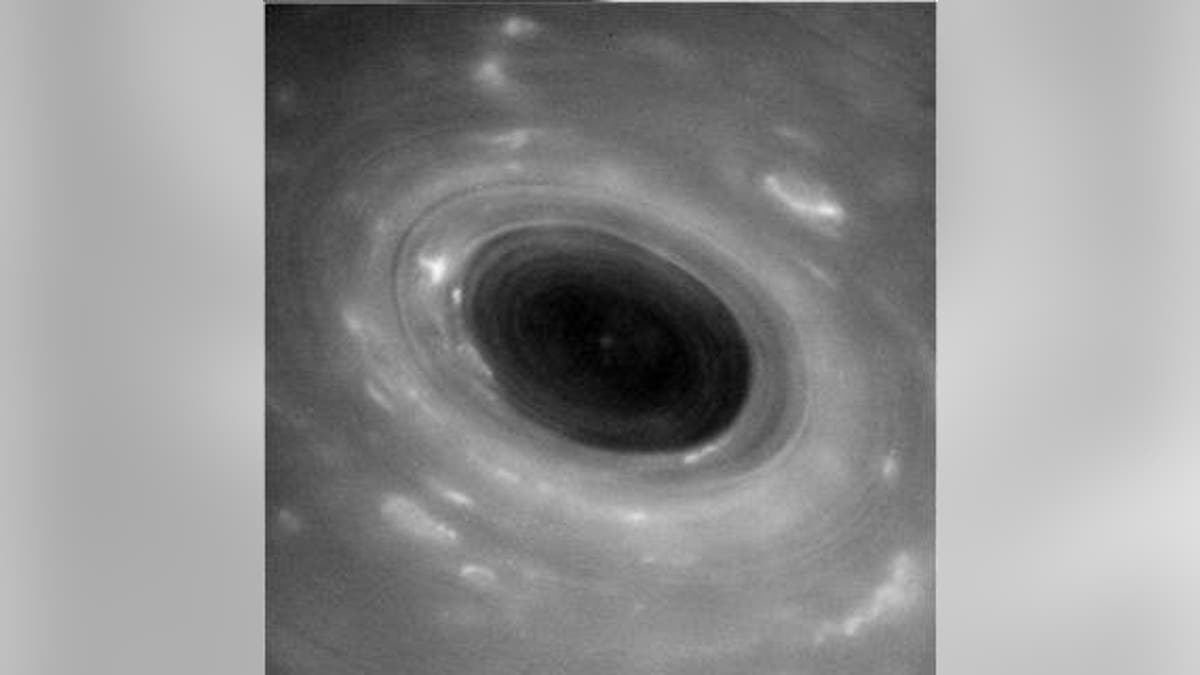
This unprocessed image shows features in Saturn's atmosphere from closer than ever before. The view was captured by NASA's Cassini spacecraft during its first Grand Finale dive past the planet on April 26, 2017. (Credits: NASA/JPL-Caltech/Space Science Institute)
NASA's Cassini spacecraft has sent back stunning images from its historic dive between Saturn and its rings.
Cassini is the first spacecraft to explore the 1,500-mile gap between Saturn and its rings. The orbiter used its dish-shaped high-gain antenna, which measures 13 feet across, as a protective shield during Wednesday’s dive.
NASA explained that its Deep Space Network Goldstone Complex in California's Mojave Desert picked up Cassini’s signal at 2:56 a.m. EDT on Thursday and data began flowing from the probe four minutes later.
TRUMP MAKES SPACE CALL TO RECORD-BREAKING NASA ASTRONAUT PEGGY WHITSON
"In the grandest tradition of exploration, NASA's Cassini spacecraft has once again blazed a trail, showing us new wonders and demonstrating where our curiosity can take us if we dare," said Jim Green, director of the Planetary Science Division at NASA Headquarters in Washington, in a statement.

This unprocessed image shows features in Saturn's atmosphere from closer than ever before. The view was captured by NASA's Cassini spacecraft during its first Grand Finale dive past the planet on April 26, 2017. (Credits: NASA/JPL-Caltech/Space Science Institute)
The spacecraft came within about 1,900 miles of Saturn’s cloud tops during its epic dive and within about 200 miles of the innermost visible edge of the rings, according to NASA.
Cassini will make a total of 22 dives between Saturn and its rings as part of the orbiter's so-called "Grand Finale." Its next dive is scheduled for May 2.
NASA FINDS HIGHEST PEAK ON SATURN'S LARGEST MOON TITAN
The spacecraft has generated a trove of scientific data on Saturn and its moons during its mission. Earlier this month, for example, NASA announced that Saturn’s moon Enceladus could support life thanks to the discovery of hydrogen.
After almost two decades in space, the orbiter’s mission will end on Sept. 15 2017 when Cassini is scheduled to crash into Saturn.
The Cassini mission began on Oct. 15 1997 when the spacecraft launched from Cape Canaveral Air Force Station aboard a Titan IVB/Centaur rocket. Cassini arrived at Saturn in 2004.
NASA is partnering with the European Space Agency (ESA) and the Italian Space Agency on the Cassini-Huygens mission. The Jet Propulsion Laboratory (JPL), a division of Caltech, manages the mission for NASA’s Science Mission Directorate.
Follow James Rogers on Twitter @jamesjrogers
